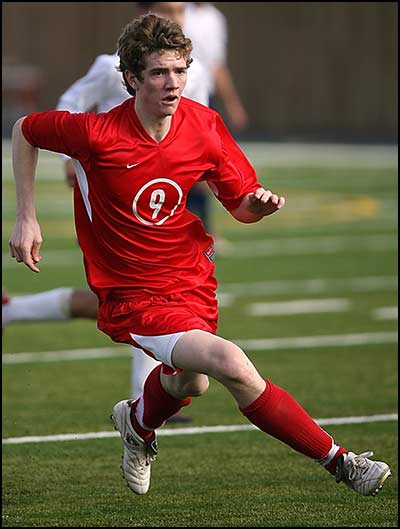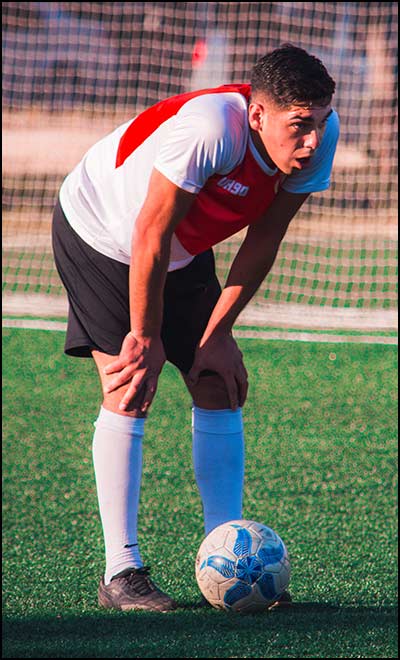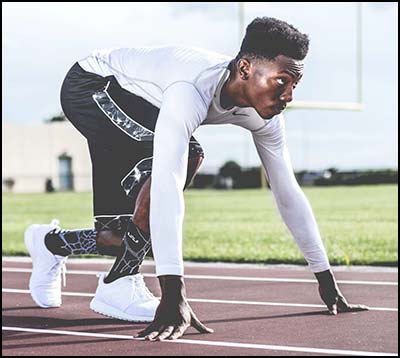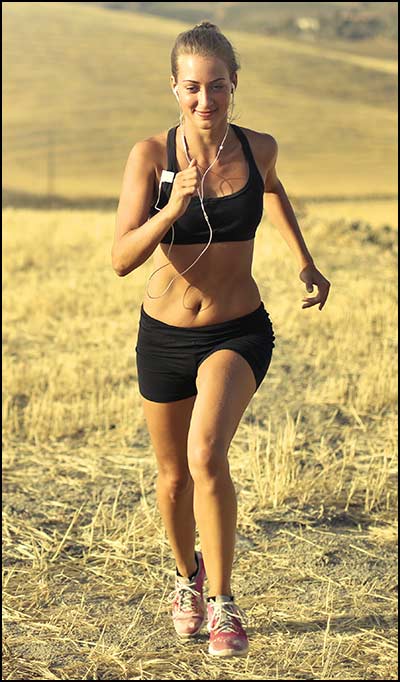PRESEASON
The One Thing You Need To Do Before You Start Your Soccer Preseason
If there’s one thing that smarter soccer players understand, it’s that they should be in peak condition prior to arriving at their first preseason session. Now you may say, how does being fit have anything to do with soccer intelligence? Well, we’re glad you asked…
Smarter soccer players know that preseason isn’t the time to get into shape, or getting their first touches on the ball after the summer layoff. On the contrary, the preseason is where players get to impress their coach and secure a starting position. Arriving to preseason soccer in peak physical condition communicates to your coach that you’re dedicated to the sport, serious about your performance and committed to the team.
What coach doesn’t want those attributes from every one of their players?
However, arriving to preseason in peak condition has additional benefits that smarter soccer players know will give them an advantage throughout the season. The biggest boost? Injury prevention. The latest statistics show that players in top physical condition have significantly less injuries than players that let their physical conditioning slip during the off season. This is especially apparent in hamstring injuries, which are occurring on a more frequent basis as the modern game becomes more physical and faster.
Today’s smart players also know that their offseason training cannot simply consist of going on long distance runs. That may have been how Dad’s and Mom’s used to train when they were playing 30 years ago, but modern training now models what players are actually doing in a game. Luis Mesquita, Strength and Conditioning Coach for the Chinese Olympic Committee and Shijiazhuang Ever Bright Football Club, stated recently in an online seminar that players have to modify their training to address the increase in the intensity and physical nature of the game. This means less long-distance running and more hard sprints, more jumping, more shuffling, more running backwards and more movements that mimic what actually happens in a game.
Sprinting is especially important, states Tom Joel, Strength and Conditioning Coach and Sport Scientist at the Premier League’s Leicester City Football Club. According to recent statistics, there is 35 percent more sprinting in professional games now, compared to only a decade ago. Defenders achieved the biggest increases in the study, up to a 63% increase over the course of the seven year study for long distance sprints. In the Bundesliga (Germany’s Top-Tier Professional Soccer League), there are now a higher number of sprints that precede goals than ever before.
Age-appropriate strength training should also be included in your pre-preseason conditioning regime. With hamstring injuries on the rise, soccer-specific, hamstring strength training should certainly be incorporated. Ask your soccer trainer or doctor what exercises are appropriate for your age, weight and ability. The important aspect to know is that there are three different hamstring muscles, which is why they are referred to as hamstrings (plural!): thus, the “hamstring” is any one of the three posterior thigh muscles in between the hip and the knee (from medial to lateral: semimembranosus, semitendinosus and biceps femoris).
Great Players Never Get Tired
“Great Players Never Get Tired,” which is the main reason that at the end of a game, a great player often makes the clutch play or scores the winning goal. Smarter Soccer players understand that being in top, physical condition is something they control, not the coach, not their teammates, not their parents on the sideline and not the opponents. And close games are often won by the team that’s more physically fit. Because not only is it a physical advantage, but it’s also a big psychological advantage: we don’t get tired.
So how can you adapt your physical training to evolution of the game? Train like the pros! This is a topic that’s way too expansive for a Soccer Hacks post, but there are plenty of resources that can assist you in making intelligent decisions on how to train effectively (and we give you a couple of activities below to get you started). Our suggestion would be to ask your coach several weeks prior to preseason camp. I know what you’re thinking: “Oh! He/She’s probably on vacation, or doesn’t want to be disturbed or (insert any lame excuse here).
Here’s the kicker: Smart players know that if they reach out to their coach, weeks prior to the start of camp, they make an invaluable impression. Especially when you show up to camp in phenomenal shape and make everyone else look slow, tried and weak. It also demonstrates that you’re “coachable,” serious about your performance, committed to the team and dedicated to the sport. Now that’s smart.


Coaches also need to be concerned about injuries. It’s simple math. The more players who become injured and can’t play, the less players available on the bench for a game. Worse, less players, mean less options to deal with tactical challenges that arise during a demanding match.

Great Players
Never Get Tired
SH.01
Sprint Training
Tall » Fall » Run
The Tall » Fall » Run is an effective soccer speed training drill to promote the proper angle of launch and eliminate the “false step” (taking a half-step backwards, before going forward), a bad habit that many athletes acquire when they’re young and have to “train out of their technique.”
Start by standing up straight, feet shoulder-width apart. Slowly fall forward. Just before you reach the point where if you don’t take a step, you’ll face plant, rise up on the balls of your feet, drive your knees forward, and take off sprinting.
Sprint at full effort for 10 yards and then de-accelerate in a controlled manner. Don’t just stop running, allowing your body to flop down to a jog and then a walk. Slow down athletically just like you would in a game.
Then either run backwards or shuffle to the starting point. Take a breath and do it again.
★ Smarter Soccer Insight: Be conscious of what you’re doing with your arms. You want to swing them vertically from “Cheek to Pocket” with your hands open and relaxed – not flailing about like your drowning. Proper arm technique makes you faster.
Sprinting Drill One
Tall Fall Run

Proper acceleration mechanics is vital in speed training. Be aware of your body at all times, so you can make corrections to your form.
SH.02
Sprint Training
Get Up & Go!
Get Up & Go! combines upper body, core and leg activation to increase lower-body strength, hip drive and leg power.
Start in a push up position.
Say “Go!”- push your arms out, get up and sprint 10 yards. Try to stay low, pump your arms vertically (Cheek to Pocket) and drive your knees forward.
Once you pass the 10 yard mark, de-accelerate athletically.
Then either run backwards or shuffle to the starting point. Take a breath and do it again.
★ Smarter Soccer Insight: Be mindful of your toes, and how vital they are for a good launch.
Sprinting Drill Two
Get up and go

Sprinting is a whole body affair, not just the legs.
SH.03
Sprint Training
Two Forward – One Back
Two Forward – One Back is a great conditioning activity that replicates two aspects of gameplay when you don’t have the ball: Sprinting forward on attack, and dropping back on defense.
Set up five cones in a straight line, 5 yards apart. (If you don’t have cones, you can use old socks, t-shirts, your sister’s stuffed animal collection, etc.)
Say “Go!” and sprint to the second cone. De-accelerate athletically and then run backwards to the first cone. Don’t look behind you the whole time you’re running backwards. Check quickly over your shoulder and then look back forward. Check behind you as many times as needed until you reach the first cone. Then sprint ahead to the third cone, de-accelerate athletically, and then run backwards to the second cone…
Repeat Two Forward – One Back until you run backwards to the fourth cone. Then sprint as fast as you can past the fifth cone. De-accelerate athletically, crouch down and hold your body in a lunge position with your back perpendicular to the ground. The knee of your back foot should not be touching the ground. Hold for a count of 20. Stand up. Switch legs and lunge down on the opposite side for another count of 20. (Bonus: Hold your hands straight up over your head to make it harder to balance.)
Stand up and walk back to the start. Repeat.
★ Smarter Soccer Insight: Use your imagination to make this activity more realistic. You’re sprinting to win a 50/50 ball. You’re running backwards the moment you notice a teammate lose possession and you need to quickly transition to defense…
Where else on the field do you sprint or run backwards? Using your imagination to play out your athletic performance on the field is called visualization, and it has real benefits – just ask Michael Phelps, 23 time Olympic Gold Medal Champion who used visualization as part of his daily training regime. Visualization in sports is a method of training your brain for successful outcomes. The more you mentally rehearse positive performances, the more it becomes hardened in your mind and the more confident you’ll be on the field.

Wow, this is awesome! Thanks for the drills. I’m going to try them out this weekend.